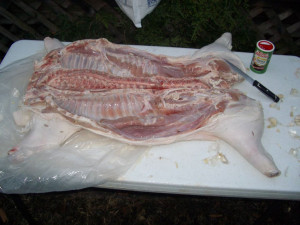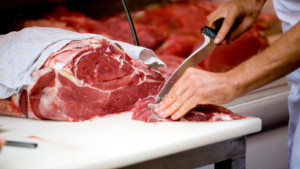On July 25, 2016, General Mills expanded its recall to include more production dates. A list of all the recalled flours and how to identify them is available on the Advice to Consumers page.
 Four more ill people have been reported from two states. The most recent illness started on June 25, 2016.
Four more ill people have been reported from two states. The most recent illness started on June 25, 2016.
An infection with another serotype, Shiga toxin-producing Escherichia coli (STEC O26), has been added to this outbreak investigation. STEC O26 was isolated from a sample of General Mills flour (pic, left, from 2011; Sorenne did not eat the flour and awareness of cross-contamination was robust).
One person has developed hemolytic uremic syndrome, a type of kidney failure.
The U.S. Centers for Disease Control, multiple states, and the U.S. Food and Drug Administration(FDA) are investigating a multistate outbreak of Shiga toxin-producing Escherichia coli (STEC) infections.
46 people infected with the outbreak strains of STEC O121 or STEC O26 have been reported from 21 states.
Thirteen ill people have been hospitalized. One person developed hemolytic uremic syndrome, a type of kidney failure. No deaths have been reported.
Epidemiologic, laboratory, and traceback evidence indicate that flour produced at the General Mills facility in Kansas City, Missouri is a likely source of this outbreak.
Several recalls and recall expansions have been announced as a result of this investigation.
In July 2016, laboratory testing by General Mills and FDA isolated STEC O26 from a sample of General Mills flour. Whole genome sequencing (WGS) showed that the STEC O26 isolated from the flour sample was closely related genetically to isolates from an ill person. The flour tested was not included in the earlier General Mills recalls.
On July 25, 2016, General Mills further expanded its flour recall to include additional lots.
CDC recommends that consumers, restaurants, and retailers do not use, serve, or sell the recalled flours.
Do not eat raw dough or batter, whether made from recalled flour or any other flour. Flour or other ingredients used to make raw dough or batter can be contaminated with STEC and other pathogens.
Consumers should bake all items made with raw dough or batter before eating them. Do not taste raw dough or batter.
Restaurants and retailers should not serve raw dough to customers or allow children and other guests to play with raw dough.
This investigation is ongoing, and we will update the public when more information becomes available.











